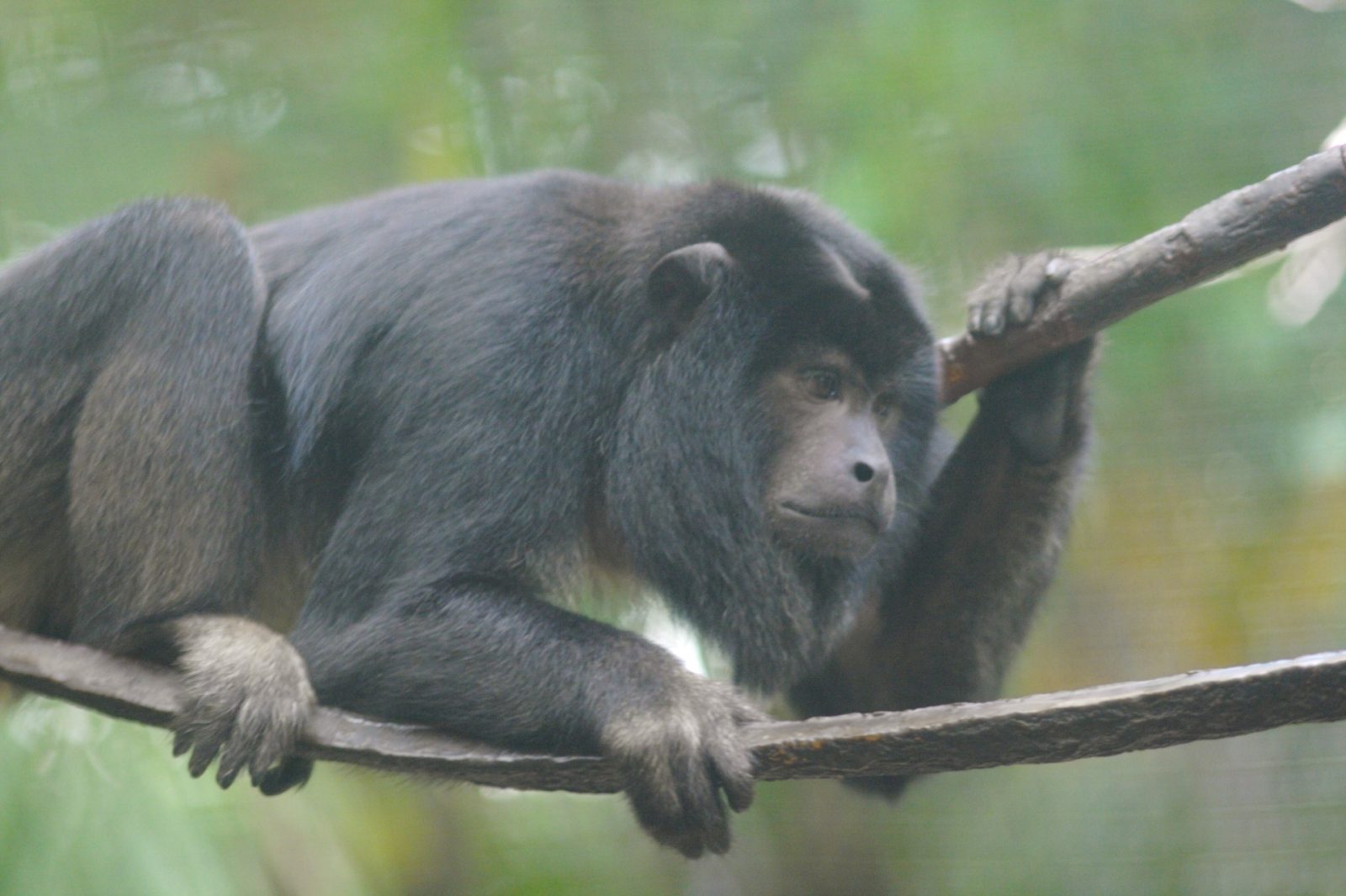Many species of primate within the Amazon rainforest has become quite content moving around in human areas, as they have sprung up fast across the region.
Yet, these cables are...


The black howler monkey (sometimes called black and gold, or black and yellow) is, like all howler monkeys, found in the Amazon basin (range map to the right – The black howler is distributed in areas of Central and South America such as Paraguay, southern Brazil, eastern Bolivia, northern Argentina, and occasionally, Uruguay). Howler monkeys are highly adaptable allowing them to thrive in many forest environments in Central and South America. They have been spotted in tropical and subtropical forests such as evergreen, seasonally dry deciduous, semideciduous, gallery, montane, woodland, and flooded forests. They may survive in a variety of settings, including disturbed ecosystems and forest remnants in agricultural regions and human populations.). Currently listed as not threatened, it is hard to come up with a population estimate. Suffice to say, at the moment they are not remotely at risk of extinction. As with many species of primate, loss of habitat – through forest being cut down by humans, or dying off due to climate change, are the biggest current threats to this species long-term survival.
They are a species which has adapted to live in human environments, however, while there are more food resources here, there are also more dangers, such as electrocution. Whether urban black howler monkey populations are self-sustaining, or whether these populations only appear to thrive by continually drawing on wild populations is something that has not been ascertained (this is similar to grey squirrels in London – they appear to be most numerous in London, and indeed they are easily seen, but without a population outside the city to keep reinforcing numbers, the London population would rapidly disappear). Would the urban black howler rapidly disappear, if their core population in the rainforest was removed? We do not know.
They only got their species status in 2000, before which they were considered a subspecies of the red handed howler monkey. There is still some debate as to whether they are truly a separate species.
As with all howler monkey species, they spread themselves out with their howls – like wolves, they howl as a troupe, but make an effort to sound as loud as possible to fool surrounding groups into thinking that their troupe is larger. Howling does greatly reduce the number of physical interactions that they have.
They spend as around 60-70% of their time resting and sleeping. While they get the majority of their nutrition from leaves (folivorous), they can also digest fruits, figs, mosses, bark, seeds and flowers. Howlers have developed a complicated digestive system that allows them to digest leaves quickly and have strong molar teeth to help chew mature leaves (most other monkeys cannot, as they do not contain enough nutrients to make it worth it).
Their activity levels vary across the year, as their diet varies, and different times of the year give more or less nutrients. In the winter, there is far less fruit, requiring the howler monkeys to consist on leaves – leading to a less active life. Their micrbione composition also changes throughout the year to help accomodate these changes in what they are eating – and this change in diet affects the whole troupe across all ages and both sexes. Their activity can generally be split into 4 areas – feeding, socialization, locomotion and sexual activity.
Black howlers’ activity levels vary depending on their diet. During the winter months, when fruit is scarce, most of their diet consists of leaves and they are less active compared to the summer months when fruit is more available. Activity ranges between feeding, socialization, locomotion, and sexual activity. Their gut microbiome composition changes seasonally to accommodate dietary changes due to restrictions of resources in the environment. Their diet is not different between different sexes and ages. Any news articles that mention this species will appear in the box below, and we will add any destinations that we have, where you can see this species below that.